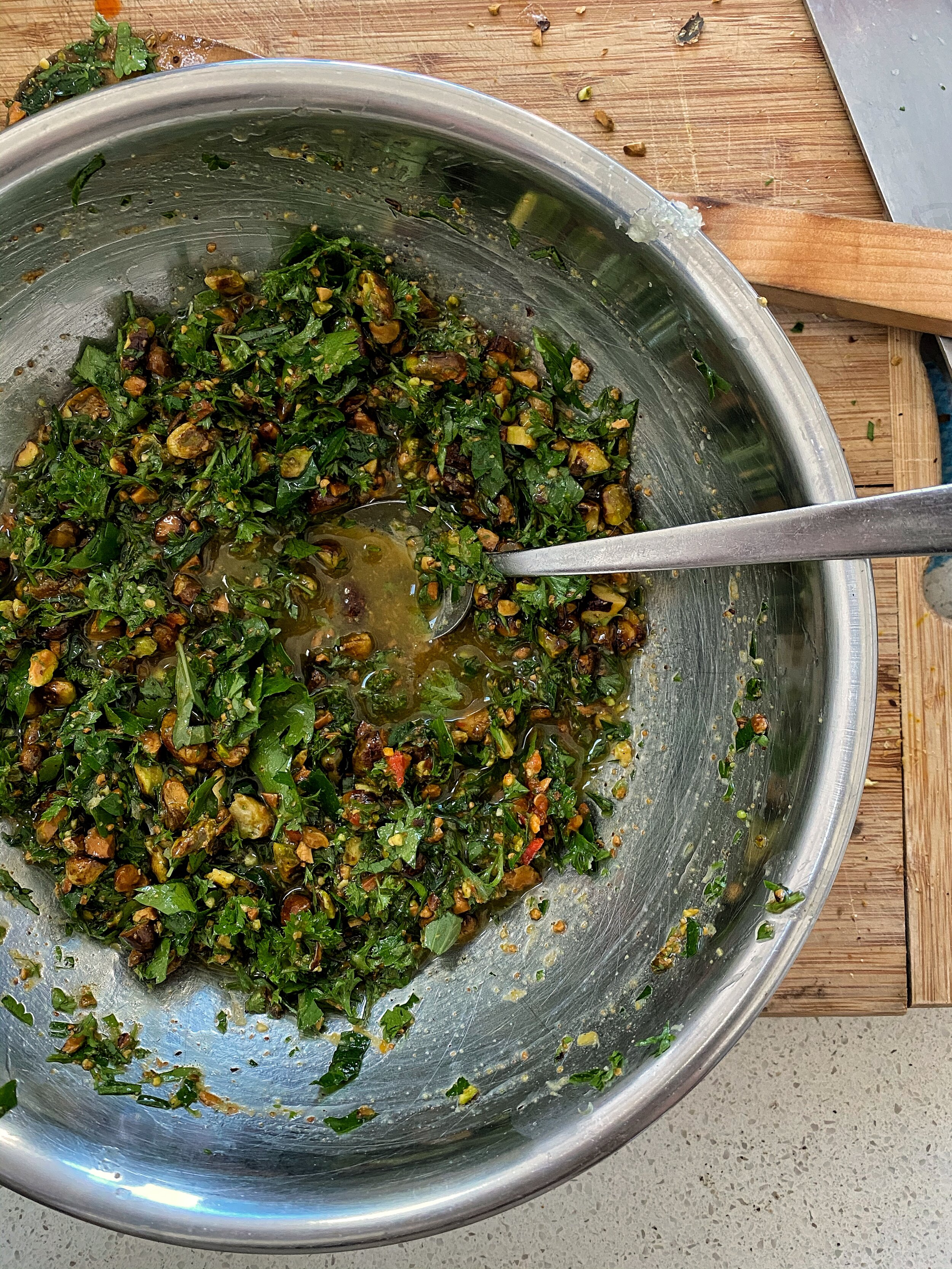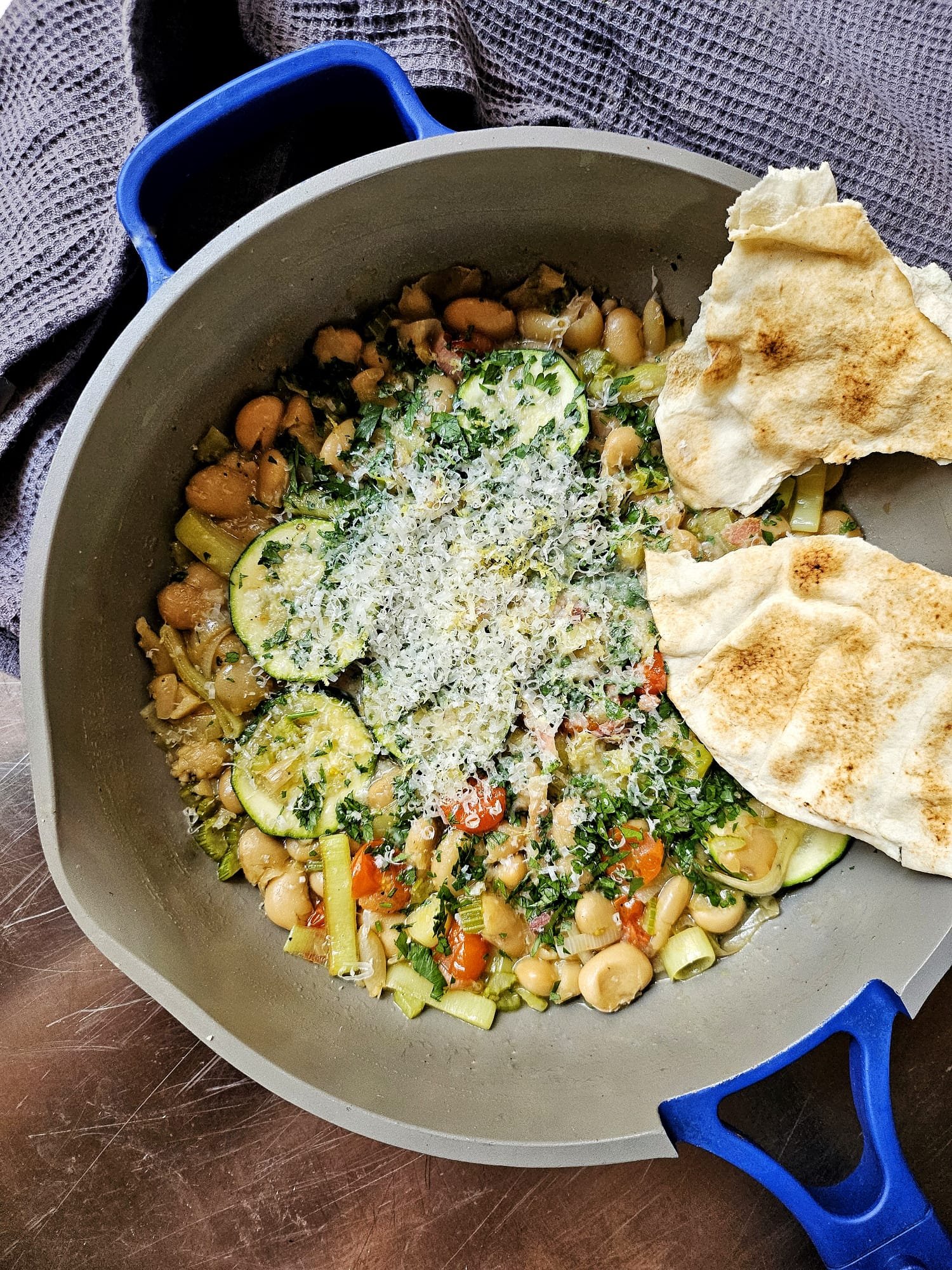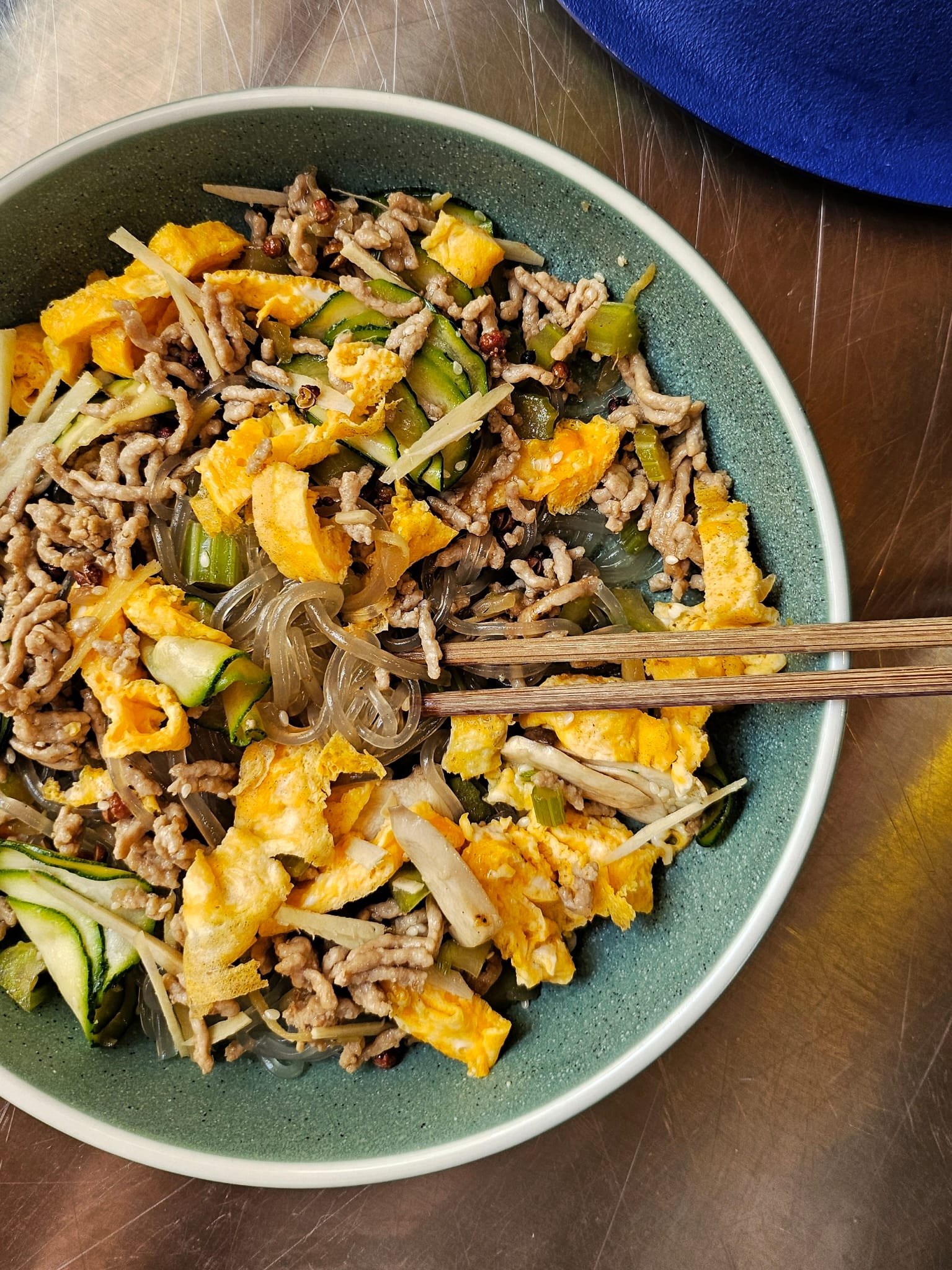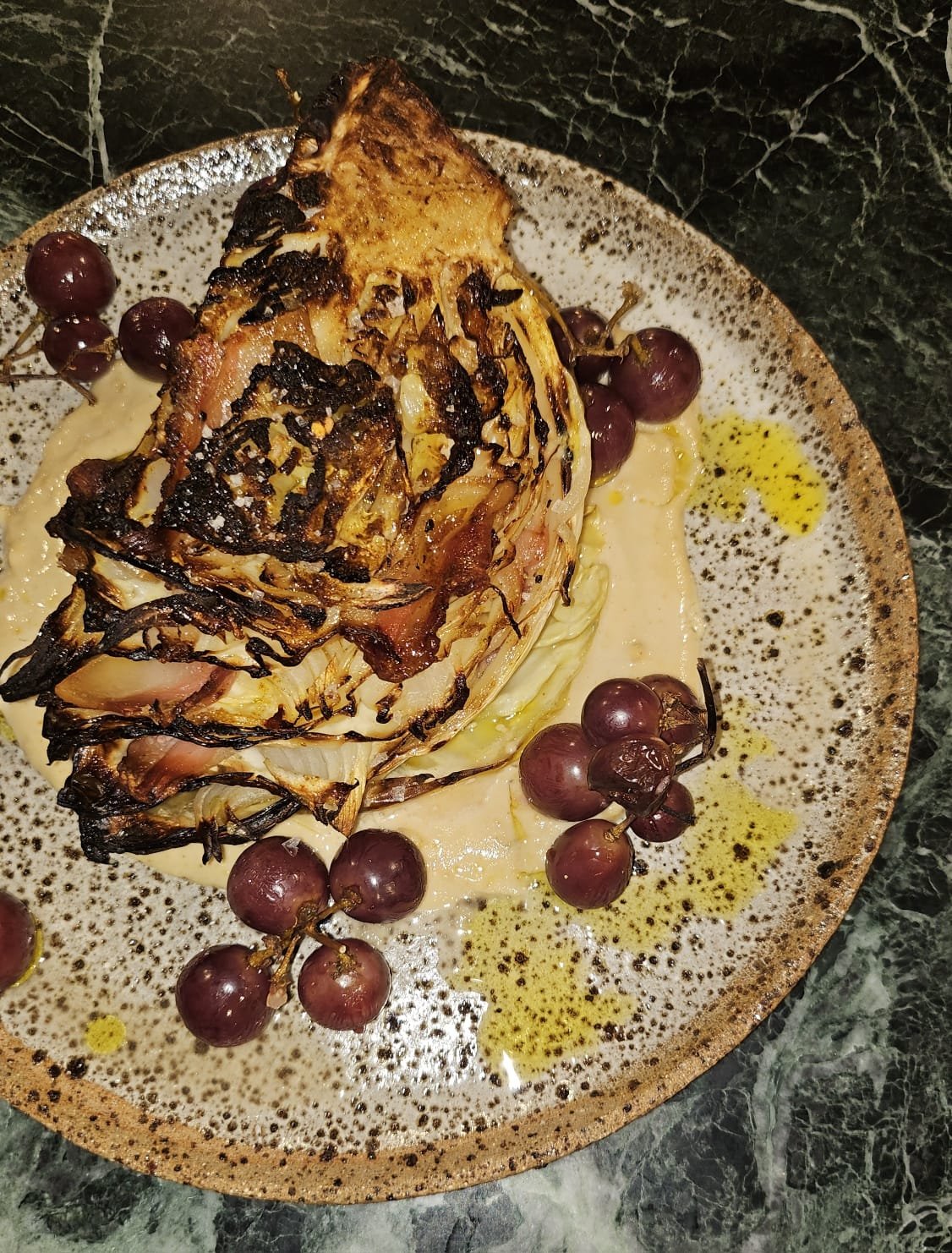If you’re after a vegetarian side with a bit of heft, this is a great one to add to your arsenal. The cooking process adds a meatiness to the texture of the dish making it feel substantial and earthy, while the finish gives the outer leaves a nuttiness, and a satisfying caramelised crunch.
Ingredients
1 head cabbage (I used Savoy), outer leaves removed and thoroughly washed
1 knob butter
To finish
1 knob melted butter
25ml sherry vinegar (or a vinegar of your choosing)
1 cup Greek yoghurt
White miso
Togarashi or furikake, to garnish (you can also top it with chopped nuts, herbs or a chimmichurri
Method
Preheat the oven to 140c. Using a small paring knife, careful cut some of the core from the cabbage, around the size of a golfball. The purpose of creating a small space in the base, is so that the cabbage can take in the steam and cook properly.
Find an oven friendly pot/baking vessel with a lid that fits the cabbage snugly, and place the cabbage in. Fill with water to halfway, top with the knob of butter, cover with baking paper and the lid. Place the cabbage in the oven for 4 hours on 140c.
Remove the cabbage from the oven and drain the water out completely. Turn the oven up too 200c. Combine the melted butter and vinegar (about equal parts) in a small bowl and brush the mixture over the top of the cabbage. Pour over any excess and place the cabbage back in the oven, uncovered, until crisp and bronzed.
To serve, combine the yoghurt with white miso, to taste. Miso yoghurt is a total game changer: it adds a supreme savoury quality to any dish you add it to, try using it as a salad dressing, or finishing roast veggies with a dollop of this white gold!
Spread the miso yoghurt on the base of a serving dish. Carve the cabbage into wedges, place on top and garnish with furkiake, or any garnish of your choosing.



















